Mouth Piercing
Mouth Piercing: Enhance Your Look with Caution and Care
Mouth piercings are a daring form of body modification that can add a touch of edge or a unique aesthetic. From labrets to Monroe piercings, they offer a variety of ways to express yourself. However, due to the sensitive nature of the mouth, mouth piercings require extra consideration and caution compared to other piercings.
Types of Mouth Piercings
Labret (vertical and horizontal)
The most common, these go through the flesh below the lip, either vertically or horizontally.
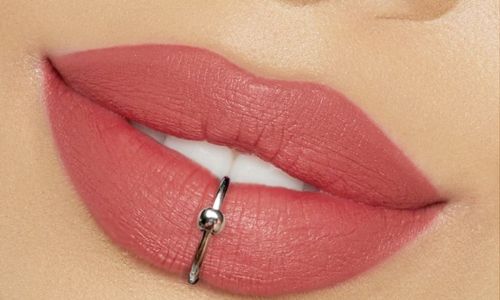

Monroe
A single piercing placed above the center of the Cupid’s bow (the small dip in your upper lip).
Medusa
A centered piercing below the center of your upper lip.

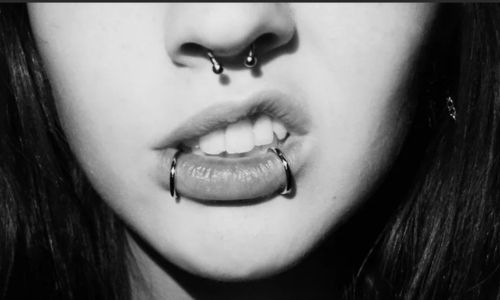
Snakebites
Two symmetrical piercings on either side of the lower lip, usually placed vertically.
Spider Bites
Similar to snakebites, but positioned closer together towards the center of the lower lip.

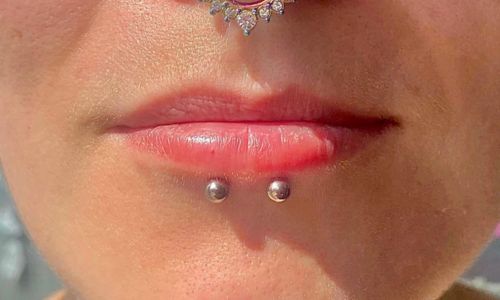
Dolphin Bite
Two symmetrical piercings on the upper lip, placed near the corners of the mouth.
Marionette Lines
Two piercings placed vertically at the corners of the mouth.
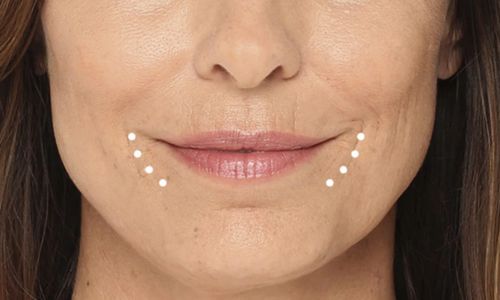
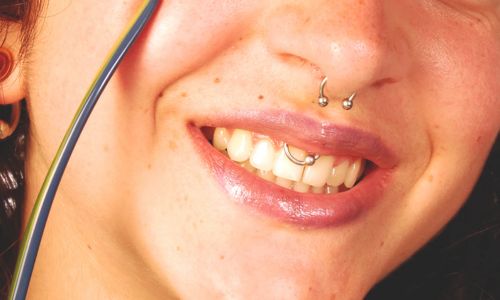
Frenulum Piercings
Pierce the small tissue fold between your upper lip and gum line (vertical or horizontal). WARNING: Due to the risk of gum recession and nerve damage, reputable piercers generally do not recommend frenulum piercings.
Mouth piercings have a higher risk of complications than piercings in other areas. Here’s why:
- Oral Health: In the mouth, the bacteria grow. Inadequate post-treatment care may result in infections that travel to your teeth and gums, where they may eventually cause gum disease, tooth decay, or even tooth loss. This is the reason it’s so important to give your oral health first priority, particularly while your mouth piercing is healing. You may avoid these issues and keep your gums and teeth healthy by brushing, flossing, and use antimicrobial mouthwash daily.
- Gum Recession: Certain mouth piercings can irritate and cause the gums to recede, especially those that are close to the gum line (such as frenulum piercings). Your teeth’s roots may become visible as a result, causing discomfort and other dental issues. In extreme circumstances, tooth loss may result. Because of this, it’s critical to select the appropriate kind of mouth piercing and to closely adhere to the aftercare recommendations in order to reduce the possibility of gum recession and other issues.
- Nerve Damage: The mouth is densely packed with nerves. Improper piercing techniques can damage these nerves, leading to numbness, tingling, or permanent loss of feeling in the area.
- Speech Difficulties: Depending on the placement and size of the jewellery, some mouth piercings can cause speech impediments or lisps.
Ensuring your safety is paramount. It’s crucial to choose a highly experienced piercer who not only understands the anatomy of the mouth and the associated risks but also has a proven safe mouth piercings track record. Look for APP (Association of Professional Piercers) members to feel secure and confident in your choice.Discuss the aftercare routine thoroughly and ensure you understand the commitment involved.
- Only implant-grade titanium, surgical steel, or gold can be used for initial jewellery. These materials reduc the risk of allergic reactions.
- The piercer will mark the desired location with a surgical pen.
- They will thoroughly clean your mouth with a disinfectant solution.
- A sterile needle will be used to create the hole.
- The piercer will then insert the initial jewellery, typically a labret stud.
- Maintaining meticulous oral hygiene is crucial. Brush your teeth daily. Use an alcohol-free antiseptic mouthwash after meals and clean the piercing site with piercing cleanser.
- Avoid smoking, alcohol, and spicy foods for several weeks after the piercing, as these can irritate the healing tissue.
- Avoid snagging your piercing on utensils, straws, or while talking.
Remember, healing takes time. Mouth piercings can take 2-8 months to heal fully, depending on the location and your individual healing process. Be patient and consistent with aftercare throughout this time, understanding that your body needs time to adjust and heal.
- Age: There’s no legal age requirement, but some piercing shops may have restrictions. It’s essential for the person getting pierced to be mature enough to understand the risks and aftercare involved.
- Lifestyle: Mouth piercings may not be suitable for everyone, especially those who play contact sports or play instruments that require mouth contact. This is because the jewellery can increase the risk of injury or interfere with the performance of these activities. It’s important to consider these lifestyle factors before deciding to get a mouth piercing, as they can significantly impact your comfort and safety with the piercing.
Mouth piercings may not be appropriate in all professional settings. Before getting one, consider your workplace’s dress code and company rules. Some workplaces have strict policies against visible piercings, while others may be more lenient. It’s important to consider these factors and how they may affect your professional image and opportunities before deciding to get a mouth piercing.
Mouth piercings can be a stylish way to express yourself, but they have significant risks. To minimize complications, carefully weigh the pros and cons, prioritize oral health, and choose a highly experienced piercer.









